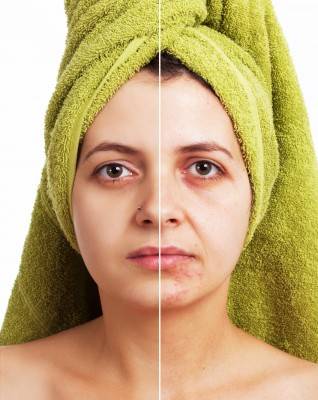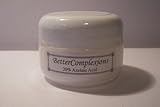
Acne is the most prevalent skin condition that affects people of all ages, genders, and races. But the fact that many people in other parts of the world are also suffering from pimples provides no comfort to someone who has to deal with blackheads, whiteheads, or zits on his or her face. Aside from being unsightly, acne can have a negative impact on the academic, professional, and social aspects of a person’s life.
According to the 2008 Skin Matters survey, having pimples as an adult is more stressful than dealing with it as a teen. Survey participants also said that having acne is worse than having wrinkles or grey hair.
Throughout the years, different treatment methods have been developed to manage this dreaded disease. Before you get information about these anti-acne strategies, it pays to know more about what you are dealing with. Take a look at some basic information about acne:
Acne Facts and Myths
Acne vulgaris or simply acne is a condition that affects the oil glands of your skin. You experience an acne breakout when the follicles in your skin are clogged with oil and dead skin cells. The exact cause of the problem is unknown but several contributing factors have been determined. Contrary to popular opinion, you don’t get acne simply because you are not washing your face enough or due to your consumption of oily or greasy foods. However, eating a lot of processed carbohydrates and sugar may attract acne-causing bacteria and cause skin cells that are associated with acne to divide.
While dirt may contribute to acne, washing your face too much may actually make your breakouts worse. You should wash your face just two times a day with a mild facial cleanser. Avoid facial scrubs because they are more likely to make matters worse. Getting a tan to dry your face will also do you no good. Tanning will help temporarily mask your pimples but it will dry and irritate your skin, leaving your face more prone to future breakouts.
Different Acne Treatment Strategies
It’s definitely not a good idea to touch, pop, or squeeze a pimple to free a clogged pore because it will make the zit look worse and last longer, cause the spread of bacteria, and may lead to permanent scarring. But this doesn’t mean that you should let your pimples disappear on their own because there are several anti-acne methods that you can try to manage your breakouts.
Acne Facial Cleansers
 There are many different acne cleansers that you can choose from. Bars and liquids are either foaming or non-foaming. Dove and Neutrogena bars are two of the gentler options. Non-foaming cleansers do not dry your skin as much as foaming ones. Among the liquid products, Cetaphil is one of the milder brands. You can also go for medicated cleansers, which are either available over-the-counter or require a prescription.
There are many different acne cleansers that you can choose from. Bars and liquids are either foaming or non-foaming. Dove and Neutrogena bars are two of the gentler options. Non-foaming cleansers do not dry your skin as much as foaming ones. Among the liquid products, Cetaphil is one of the milder brands. You can also go for medicated cleansers, which are either available over-the-counter or require a prescription.
Medicated products often contain benzyl peroxide, salicylic acid, or sulfur. While they can help clear your pores and manage breakouts, they have a tendency to leave your skin dry. If you are already on a prescription acne medication, it might be overkill to use a strong facial cleanser. Consult your dermatologist to learn about the components of the right facial cleanser for your skin type, and if it is safe to use them with other products.
Antibiotics
Oral and topical antibiotics are commonly prescribed by doctors to patients who are dealing with acne to kill the bacteria in and around the follicle, and minimize inflammation by reducing the irritating chemicals produced by white blood cells and fatty acid levels in the sebum. The most common antibiotics prescribed for acne are doxycycline, erythromycin, and minocycline, which are available in gel or lotion form and applied once or twice a day for up to two months. The use of antibiotics can cause peeling, redness, and skin irritation. Other side effects include diarrhea, loss of appetite, photosensitivity (doxycyline); dizziness, headaches, and stomaches (erythromycin); and hearing problems and lightheadedness (minocyline). Since, the use of any type of antibiotic can lead to the growth of antibiotic-resistant bacteria, there is a possibility that the acne-causing bacteria on your face will become immune to the antibiotic you are using, which can potentially make your acne worse and cause other infections.
Topical Treatments
 Anti-acne creams, gels, or lotions often contain benzoyl peroxide, retinoids, or azelaic acid (pictured right). Benzoyl peroxide is applied about 30 minutes after you wash your face and helps reduce the amount of acne-causing bacteria as well as prevent dead skin from clogging your hair follicles. It can cause dryness and peeling of your skin, and increase your skin’s sensitivity to sun exposure. Retinoids are natural or synthetic chemical compounds that are related to vitamin A. Adapalene and tretinoin are two of the retinoids used to treat acne. They work by reducing sebum production, stop dead skin cells from clogging follicles, and stimulate the production of new skin cells. Common retinoid side effects include irritation and stinging sensations. Azaleic acid is used if a patient is prone to the side effects of benzoyl peroxide and retinoids. It works by killing bacteria and getting rid of dead skin. While milder than benzoyl peroxide and retinoids, azaleic acid can still cause dryness, itchiness, and redness of the skin.
Anti-acne creams, gels, or lotions often contain benzoyl peroxide, retinoids, or azelaic acid (pictured right). Benzoyl peroxide is applied about 30 minutes after you wash your face and helps reduce the amount of acne-causing bacteria as well as prevent dead skin from clogging your hair follicles. It can cause dryness and peeling of your skin, and increase your skin’s sensitivity to sun exposure. Retinoids are natural or synthetic chemical compounds that are related to vitamin A. Adapalene and tretinoin are two of the retinoids used to treat acne. They work by reducing sebum production, stop dead skin cells from clogging follicles, and stimulate the production of new skin cells. Common retinoid side effects include irritation and stinging sensations. Azaleic acid is used if a patient is prone to the side effects of benzoyl peroxide and retinoids. It works by killing bacteria and getting rid of dead skin. While milder than benzoyl peroxide and retinoids, azaleic acid can still cause dryness, itchiness, and redness of the skin.
Special Therapies
Photodynamic therapy (light therapy) involves exposing your skin to different types of light (blue light being the most common) to kill bacteria and decrease oil production by shrinking the sebaceous glands. Peeling and temporary redness are the common side effects associated with light therapy. Hormone therapy , on the other hand, can be beneficial for women suffering from acne that is associated with hormonal conditions like polycystic ovary syndrome.
Special Devices
Special devices have been developed as quick fix anti-acne solutions. The Zeno acne blemish device heats your skin for up to 120 degrees to kill acne-causing bacteria and lessen inflammation in the pores. The device provides mixed results. Some users say that it works but others say that it made their pimples worse and caused redness and mild burns. If you have steady hands, you can also try a comedone extractor, a tool designed to remove blackheads, pimples, and zits. Comedone extractors are used in many facial spas.
This is a guest post by Francine Luke who writes for Top Beauty Secrets Eyelash Reviews, an online resource that provides analysis and recommendation of products reviews on eyelash enhancers. Aside from writing about beauty products, Francine is also interested in fitness, health and sports.